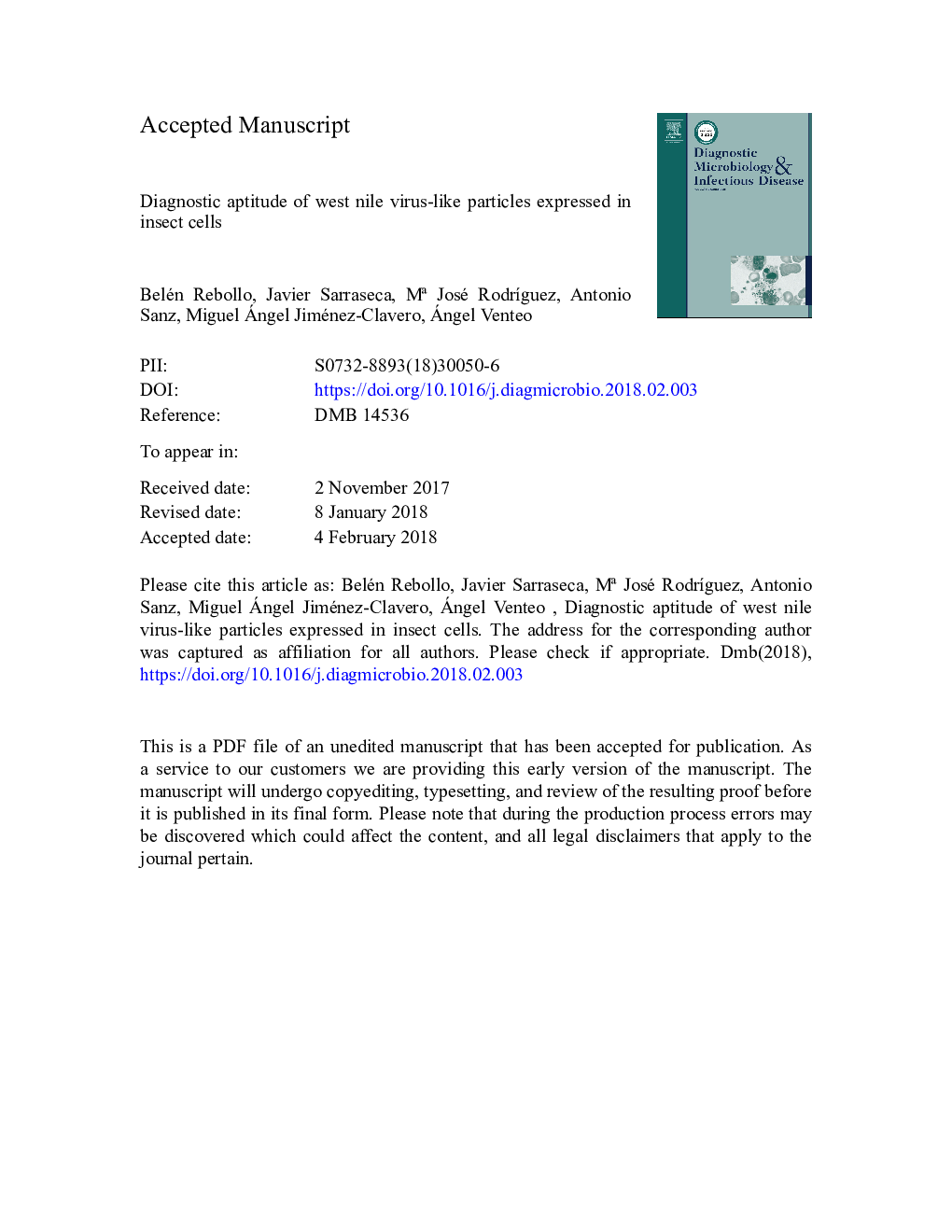| Article ID | Journal | Published Year | Pages | File Type |
|---|---|---|---|---|
| 8737209 | Diagnostic Microbiology and Infectious Disease | 2018 | 24 Pages |
Abstract
West Nile virus is a globally spread zoonotic arbovirus. The laboratory diagnosis of WNV infection relies on virus identification by RT-PCR or on specific antibody detection by serological tests, such as ELISA or virus-neutralization. These methods usually require a preparation of the whole virus as antigen, entailing biosafety issues and therefore requiring BSL-3 facilities. For this reason, recombinant antigenic structures enabling effective antibody recognition comparable to that of the native virions, would be advantageous as diagnostic reagents. WNV virions are enveloped spherical particles made up of 3 structural proteins (C, capsid; M, membrane and E, envelope) enclosing the viral RNA. This study describes the co-expression of these 3 proteins yielding non-infectious virus-like particles (VLPs) and the results of the initial assessment of these VLPs, used instead of the whole virus, that were shown to perform correctly in two different ELISAs for WNV diagnosis.
Related Topics
Life Sciences
Immunology and Microbiology
Applied Microbiology and Biotechnology
Authors
Belén Rebollo, Javier Sarraseca, Mª José RodrÃguez, Antonio Sanz, Miguel Ángel Jiménez-Clavero, Ángel Venteo,
